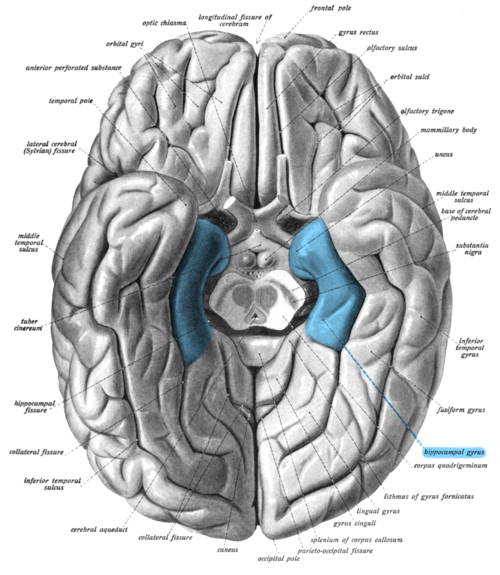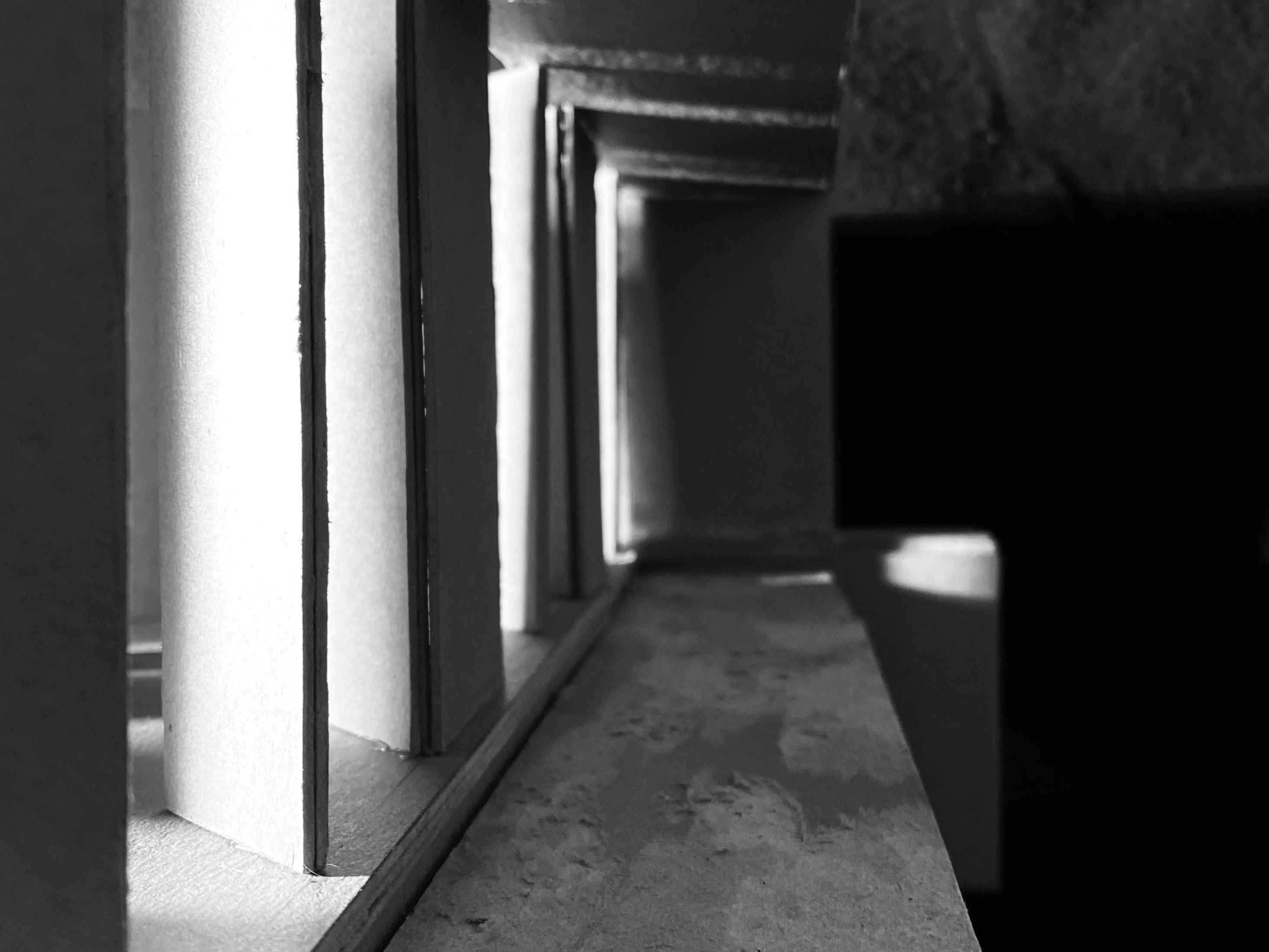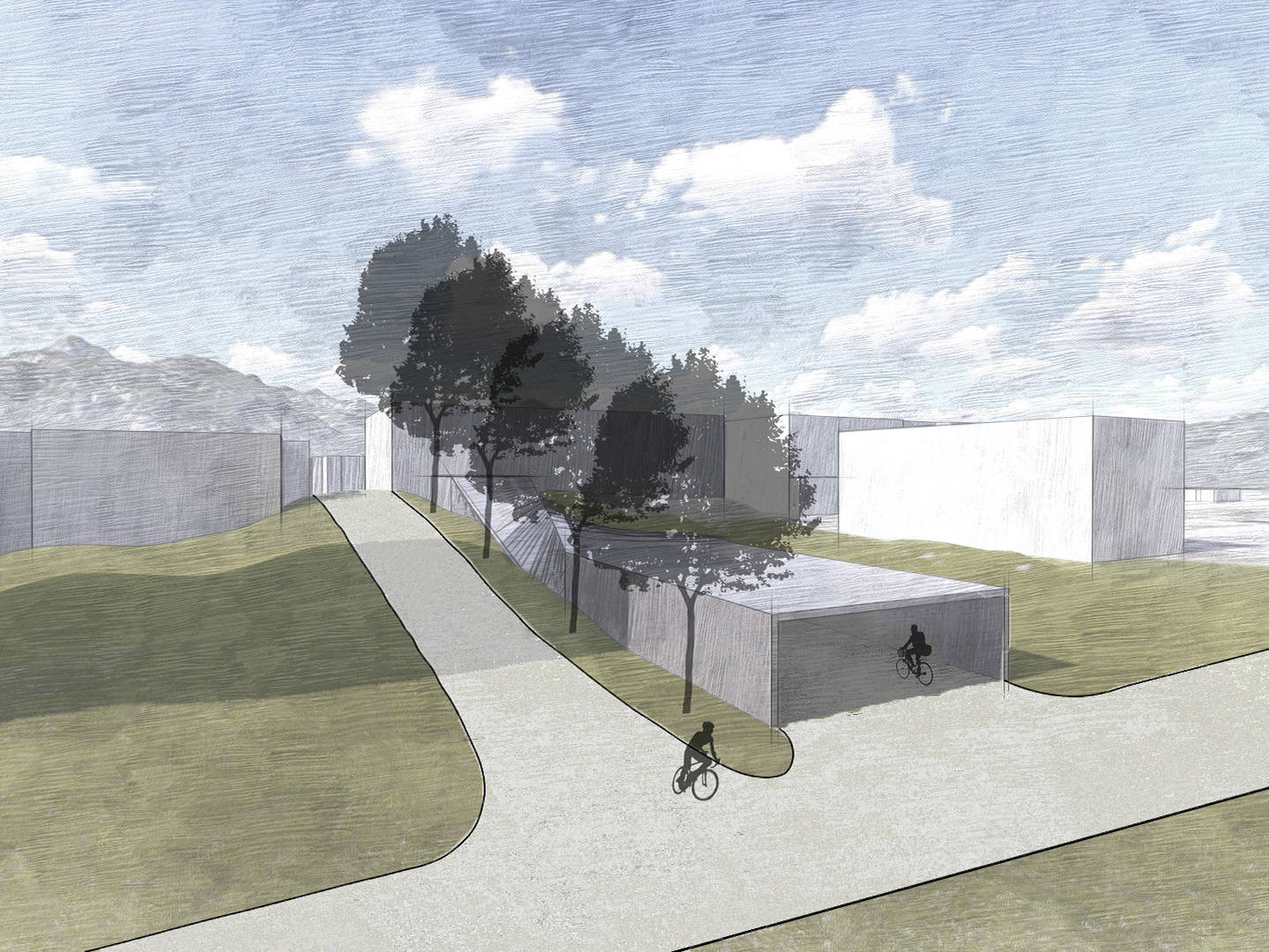The Golden Ratio
The Golden Ratio has been used throughout architectural history by numerous individuals, and it seems like this is what our brain defines as harmonic, which is understood to mean a consistent, orderly, or pleasing arrangement of parts. The golden mean is the numeric relationship where the ratio of the long side to the short side of the golden section is always within the range of 1.618 to 1. Humans subconsciously consistently returning to the golden ratio is an example, shown through history, of how the human brain has an inherent response to symmetry as well as harmony and proportions related to the golden mean
Parahippocampal Place Area / Parahippocampal Gyrus
Highlighted in blue
The parahippocampal place area (PPA) displays more activity as compared to other kinds of visual stimuli (Epstein and Kanwisher et al. (1999), such as Fusiform Face Area (FFA), used for facial recognition, suggesting the PPA is significantly more active when viewing more complex scenes such as rooms, landscapes, and city streets as compared to viewing photographs of objects, faces, or other kinds of visual stimuli. (Eberhard 75)
However, factors such as familiarity with the location (Ex. research of location or previous visits) or sensory experiences do not affect the PPA. The PPA also does not receive imaging information from memories or participate in movement through the local area.
The PPA is responsible for encoding new perceptual information regarding the appearance of a layout of an architectural space or place.

Parahippocampal gyrus highlighted in blue (Wikipedia)

Example of a more complex scene

Retinal Path (Eberhard)

Ventral and Dorsal Streams

Burruss Hall, Virginia Tech, Blacksburg, Virginia (Ivan Morozov)
Main Routes for Retina Input
Signals must be provided for the PPA to help contextualize our surrounding environment. This information is received through the retinas and then processed via the lingual sulcus (as shown to the left) through two main pathways: The Dorsal or Ventral Pathway. The dorsal stream enables visual control of skills, such as drawing. The focal point of the ventral stream is the lasting characteristics of “objects” that establish relationships between them. The relationship is established by identifying the size, shape, color, brightness, etc. (Eberhard, 77). The ventral stream focusing on these characteristics provides our brain with long-term perceptual knowledge, allowing us to recognize buildings such as Burruss Hall.
Six Specialized Areas of the Visual Cortex
"- V1: The primary area, where all of the inputs are received and distributed
- V2: Produces some sort of image
- V3: Contributes depth and distance
- V4: Color is overlaid
- V5: In what we are seeing becomes "frozen" for a split second for recognition to take place
- V6: Designates the specific position of the object being viewed" (Eberhard, 80)
Nearly half of the cerebral cortex is used when processing visual input from the retinas, which is processed by the retina-associated ganglions and transmitted to the back of the brain through the optic nerve. Once the signals have stimulated other portions of the visual cortex, the perceived image is assembled, where all of the signals are archived and distributed, also known as V1.
The exported signals from regions V1 through V6 go to various portions of the brain. For example, the parietal areas mainly comprehend where objects are in space, whereas the cortical temporal regions analyze the forms of objects to provide what is being seen.
This suggests perception does not occur until the mind assembles the necessary memories associated with such objects. Still, recognition does not occur until the mind locates a memory associated with such objects.
The six specialized areas of the visual cortex (Eberhard, 80)
Depth being perceived
Role of the Visual System in Architecture
For our visual system to detect distance, depth, or where we are in an environment, the reflection of light off a surface is required to detect these characteristics. The visual system also enables us to identify an object's shape, size, color, etc. The system also creates a "freeze frame," which allows us to see without blur. However, the system must perform these actions under various lighting conditions. How does this relate to architecture? Or, more specifically, the academic side of architecture? A significant portion of work exported by architecture students is through visual perceptions, such as images, which are supposed to represent the sensory experience if we were visiting the structure. What we (as architects) should take away from neuroscience is perception is completely integrated across all senses, and attempting to represent all senses through only one is not sufficient.
Light in Architectural Space
In architecture, we use light to allocate work such as reading, etc.; however, we also use light to reveal and define the spatial volume, plans, ornaments, and color of these spaces. Light is also used to draw attention to points of interest or assist people in finding their way.
Raw information, such as printed text, will not be processed beyond the visual cortex unless the lux (measurement of light levels) is above a certain threshold in these spaces without sufficient light. Studies suggest recognition of architectural features is impaired when ambient lighting is below a certain threshold.
Take Aways
- Our brains, being wired to respond to the golden ratio/golden mean for centuries, express our desire for symmetry
- The parahippocampal place area is most active when we are viewing more complex scenes such as rooms, landscapes, and city streets as compared to viewing photographs of objects, faces, and other kinds of visual stimuli
- Parahippocampal place area recognition activity is NOT affected by the familiarity of the place being viewed, does NOT receive image information from memories, does NOT increase the level of activity when a person experiences a sense of motion through the space, nor does it participate in the movement through the local area
- Parahippocampal place area does suggest encoding new perceptual information about the appearance of the layout of spaces and places
- The ventral stream focuses on size, shape, color, etc., providing our brain with long-term perceptual knowledge and allowing us to recognize buildings such as Burruss Hall
- Our visual attention span, especially the visual field in the peripheral area, is restricted by the size of a window opening
- Recognition of architectural features is impaired when lightning of the environment is below a certain threshold
- Raw information (such as text) will not be processed if lux levels are not above a certain threshold
- Perception does not occur until the mind assembles the necessary memories associated with such objects, but recognition does not occur until the mind locates a memory associated with such objects
- Perception is integrated across all senses, meaning representations of sensory experience through only one of our senses are not sufficient


















